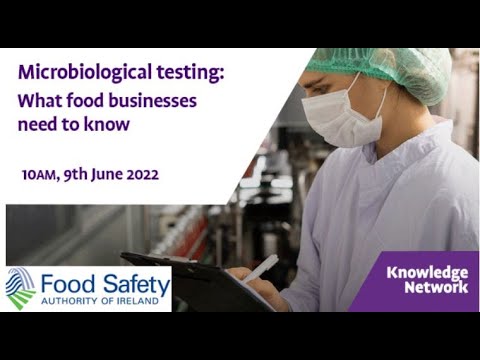
As a pet owner, I know how vital pet food testing is. It keeps our furry friends safe and healthy. The pet food world has changed a lot. Now, testing is key to making sure food is good for pets.
Pet food testing checks many things. It looks at the food’s nutritional value and if it’s safe. Companies use new methods to make sure every meal is safe and healthy.
This testing is more than just checking ingredients. It uses advanced science to find harmful stuff. It also checks for things that could make pets sick or allergic.
Key Takeaways
- Pet food testing ensures complete nutritional safety
- Advanced lab methods find health risks
- Testing keeps pets safe from harmful stuff
- Companies are now open about food quality
- Regular testing stops health problems
Understanding the Importance of Pet Food Safety Standards
Pet food safety is a big deal for pet owners. I’ve looked into how testing labs keep our pets safe from health risks.
Testing pet food is complex. Labs work hard to make sure it’s safe for our pets. They check every product to meet strict health standards.
Regulatory Landscape for Pet Food Production
The rules for making pet food are strict and many. Important groups watch over this:
- Food and Drug Administration (FDA)
- Association of American Feed Control Officials (AAFCO)
- United States Department of Agriculture (USDA)
Impact of Quality Testing on Animal Health
Testing labs do deep checks to stop health problems. They look at many important things:
| Testing Parameter | Purpose |
|---|---|
| Microbial Screening | Detect harmful bacteria |
| Nutritional Analysis | Verify balanced nutrient profile |
| Contaminant Detection | Identify possible toxins |
Essential Safety Parameters in Production
Labs check important safety points to ensure quality:
- Protein content verification
- Mineral and vitamin composition
- Allergen identification
- Chemical residue screening
Testing in labs helps keep pet food high quality and safe for animals.
The Science Behind Pet Food Testing
Pet food microbiology testing is key to keeping our pets safe and healthy. It uses advanced science to check the quality of their food. This research helps us understand how to protect our furry friends from harm.
This testing focuses on finding and checking for harmful germs in pet food. Labs use high-tech methods like:
- Polymerase Chain Reaction (PCR) testing
- Mass spectrometry analysis
- Bacterial culture screening
- Molecular detection methods
These methods help spot dangerous germs that could hurt our pets. They help find harmful pathogens so food makers can make sure their products are safe. This way, pets get the best food without risks.
| Testing Method | Primary Purpose | Detection Capability |
|---|---|---|
| PCR Testing | Genetic material identification | Specific bacterial strains |
| Mass Spectrometry | Chemical composition analysis | Molecular contaminants |
| Bacterial Culture | Microorganism growth evaluation | Live bacterial populations |
Pet food microbiology testing does more than just find germs. It also checks if the food is good for our pets. By using the latest science, experts can spot problems early. This keeps our pets healthy and happy.
Professional Pet Food Testing Labs and Their Methods
Pet food testing labs are key to keeping our pets safe and healthy. They use advanced science to check pet food closely.
Today’s pet food testing labs use top-notch methods to ensure pets get the best nutrition. They follow strict steps to keep animals safe and build trust with pet owners.
Laboratory Testing Procedures
In these labs, detailed testing is done to find harmful substances and check nutritional levels. The steps include:
- Sample collection and preparation
- Microbiological screening
- Chemical composition analysis
- Contaminant detection
Quality Control Measures
Quality control is a big deal in these labs. Researchers follow strict rules to make sure test results are right. Standardized testing methods help check products the same way every time.
Testing Equipment and Technology
These labs use the latest tech to analyze pet food. Tools like high-performance liquid chromatography (HPLC) and atomic absorption spectroscopy help examine food ingredients closely.
Thanks to modern technology, these labs give us vital information. This helps keep pets healthy and supports good pet care.
Common Contaminants Detected Through Pet Food Testing

Pet food testing is key to finding harmful substances in pet food. It helps keep our pets safe. Scientists use advanced methods to find these dangers.
The most common contaminants found include:
- Mycotoxins: Toxic compounds from molds that can harm health
- Heavy metals like lead, mercury, and arsenic
- Pathogenic bacteria such as Salmonella and E. coli
- Antibiotic-resistant microorganisms
- Undeclared allergens
Testing labs use high-tech tools to find these harmful substances. They can spot even tiny amounts that regular checks might miss.
“Rigorous testing is our first line of defense in protecting pet health and preventing food-related illnesses.” – Dr. Karen Roberts, Veterinary Nutritionist
These contaminants pose serious health risks. Mycotoxins can harm organs, heavy metals can affect the brain, and bacteria can cause stomach issues. Thanks to better testing, pet food is safer than ever.
Knowing about these contaminants helps pet owners choose safer food for their pets. It’s all about keeping our furry friends healthy and happy.
Nutritional Analysis in Pet Food Quality Control
Pet food testing labs are key in keeping pet food nutritious. They do more than just check ingredients. They help pet owners know what their pets eat.
Nutritional testing covers many important areas. Labs use advanced methods to check key nutrients for animal health.
Protein Content Evaluation
Protein is vital for pets. Labs test protein quality and amount. They make sure:
- Protein levels match what’s on the label
- Amino acid profiles are complete
- Protein sources are easy to digest
Vitamin and Mineral Assessment
Testing vitamins and minerals is key to avoid nutritional gaps. Labs use precise methods to check these micronutrients.
| Nutrient Category | Testing Method | Purpose |
|---|---|---|
| Vitamins | Spectrophotometry | Measure concentration levels |
| Minerals | Atomic Absorption | Detect trace element quantities |
| Trace Elements | Mass Spectrometry | Identify possible contaminants |
Fat Content Analysis
Fat analysis is about nutritional energy and quality. Labs check fat content for health benefits and balance.
- Evaluate fatty acid profiles
- Check fat oxidation levels
- Confirm essential nutrient percentages
Understanding Pet Food Labels and Testing Results
Reading pet food labels can be tough for pet owners. They want the best for their pets. Consumer reports on pet food testing give important info on quality and safety.
When looking at pet food packaging, pay attention to these important parts:
- Guaranteed Analysis section
- Ingredient list order
- Nutritional adequacy statement
- Manufacturer contact information
The guaranteed analysis shows key nutrients like protein, fat, fiber, and moisture. But, these numbers don’t fully show the food’s quality.
Consumer reports on pet food testing go deeper. They reveal:
- Precise nutrient levels
- Potential contaminant presence
- Actual digestibility rates
- Comparative quality assessments
Pet owners should ignore marketing claims and trust testing data. These reports show risks and check if the food is safe.
Understanding labels transforms pet nutrition from guesswork to informed decision-making.
By understanding consumer reports on pet food testing, you can pick the best food for your pet.
How Consumer Reports Influence Pet Food Testing Standards
Consumer reports have changed the pet food world. They’ve brought more openness and better safety and quality. Pet owners’ voices have made a big difference in how food is tested and controlled.
Today, pet owners want detailed reports on pet food testing. They look for more than just what’s in the food. This has made companies test their products more thoroughly and act fast on safety issues.
Market Impact on Testing Requirements
The market has started to listen to what consumers want. Changes come from:
- Social media making concerns known
- Pet owners sharing info quickly
- More focus on where ingredients come from
Consumer Advocacy and Safety Improvements
“Consumer awareness is the most powerful tool in ensuring pet food safety” – Pet Nutrition Expert
Groups that support consumers have pushed for better testing. Their work has led to:
- Better lab tests
- Clearer labels
- Tighter quality checks
Industry Response to Testing Results
Pet food makers are tackling concerns head-on. They’ve set up advanced testing to keep trust with consumers.
| Testing Focus | Improvement Percentage |
|---|---|
| Contaminant Detection | 45% |
| Nutritional Accuracy | 38% |
| Ingredient Traceability | 52% |
The industry is working with consumer reports to improve pet food. This teamwork aims to keep pets healthy and safe.
Choosing Pet Food Based on Testing Certifications

Choosing the right pet food is important. It’s all about the testing certifications. These tests ensure your pet’s food is safe and of good quality. Knowing about these certifications helps you pick the best food for your pet.
When you look at pet food brands, check for these signs:
- Third-party laboratory testing certifications
- AAFCO (Association of American Feed Control Officials) compliance
- Independent quality assurance seals
- Detailed microbiology testing reports
Choose brands that show their testing results clearly. Transparency is the hallmark of a trustworthy pet food manufacturer. Look into these areas:
- Pathogen screening processes
- Nutritional content verification
- Contaminant detection methods
- Frequency of testing
“Not all pet foods are created equal. Rigorous testing separates exceptional brands from mediocre ones.” – Veterinary Nutrition Expert
Pet food microbiology testing is more than just checking for nutrients. It’s about making sure the food is safe for your pet. Look for brands that really test their food and care about quality.
The right certification can greatly improve your pet’s health and happiness.
Conclusion
Pet food testing is key to making sure our pets get the best nutrition. It’s not just about checking quality. It’s about using science to keep pets safe from health risks.
Together, makers of pet food, government agencies, and labs are making food safer. New tech lets us find bad stuff and missing nutrients better. This helps us pick the best food for our pets.
The future of pet food testing looks bright. New tools like advanced spectroscopy and genomics will change how we check food. It’s up to us to ask for clear info and support companies that test well.
Our main goal is to feed our pets safely and healthily. Knowing about pet food testing helps us choose better. This keeps our pets happy and healthy for a long time.



